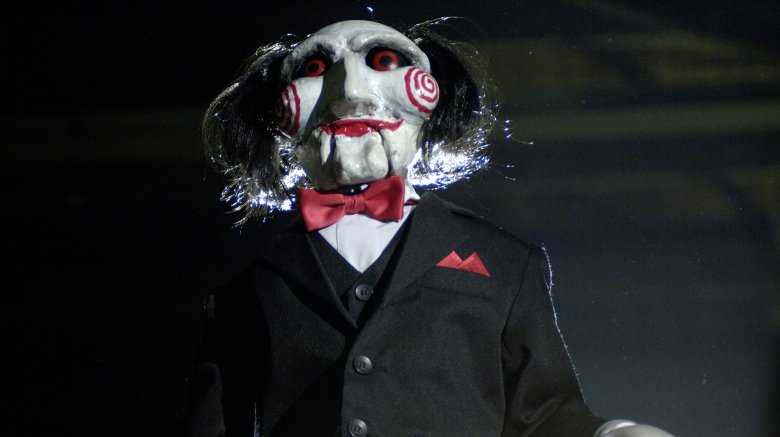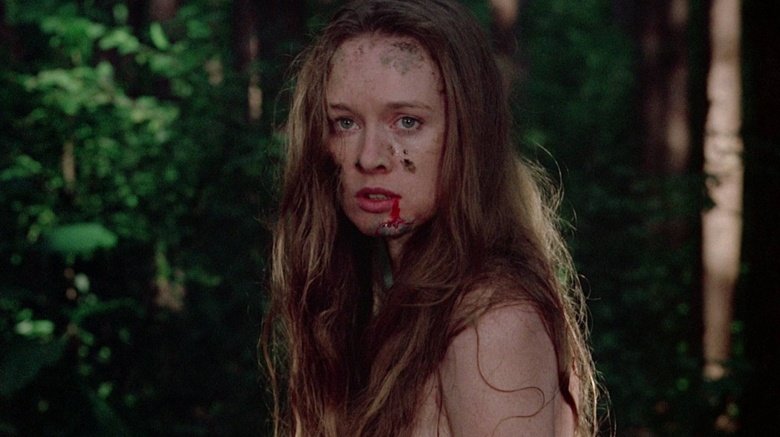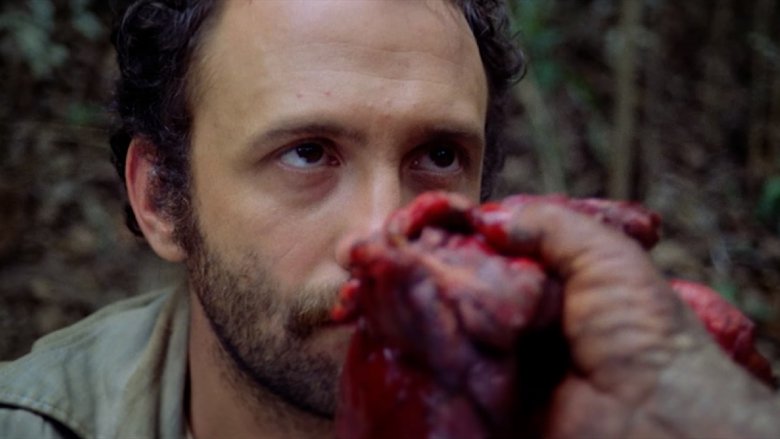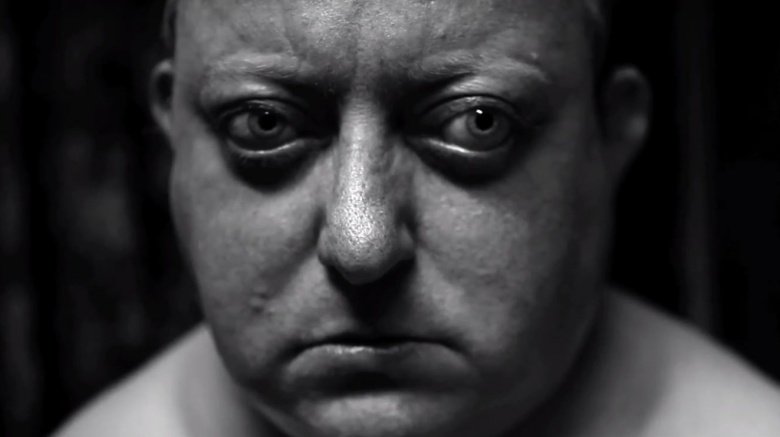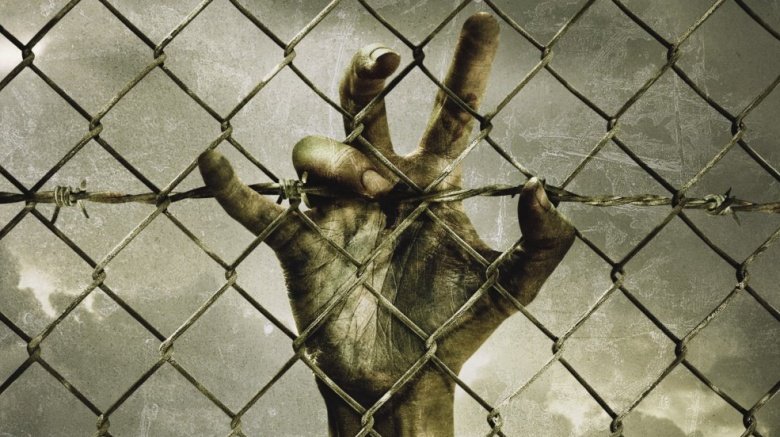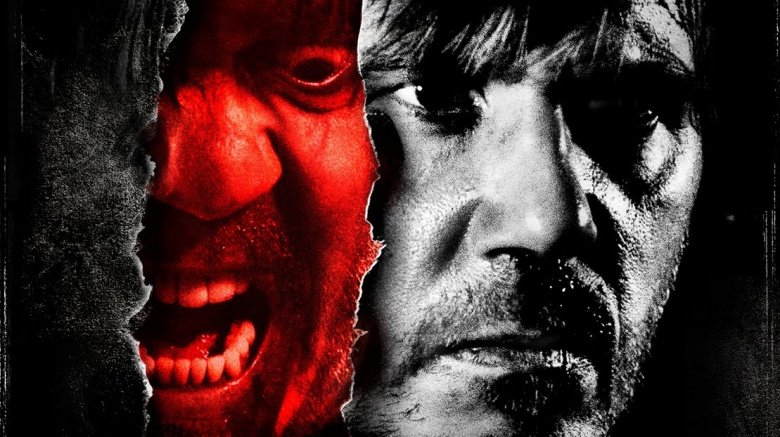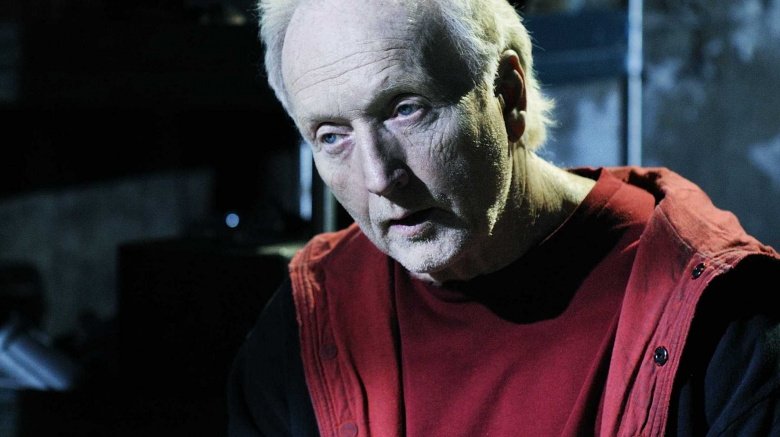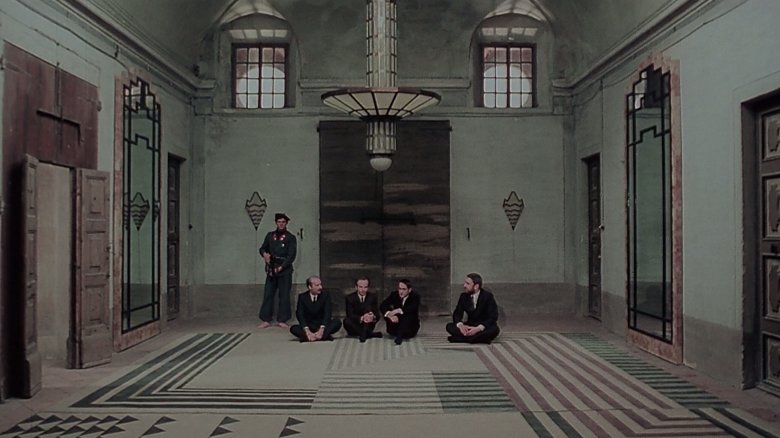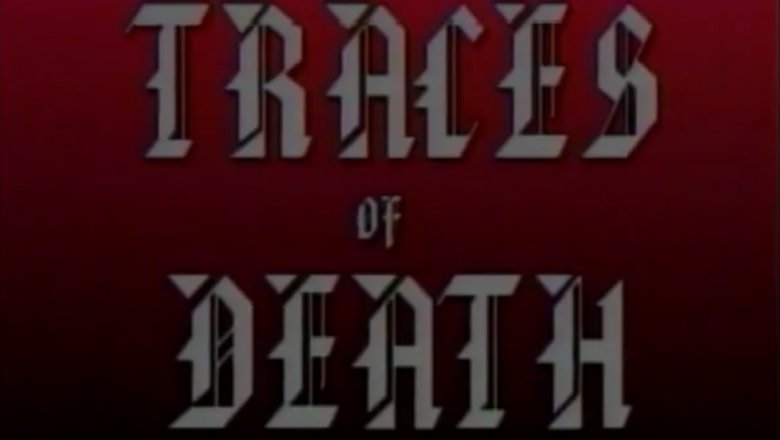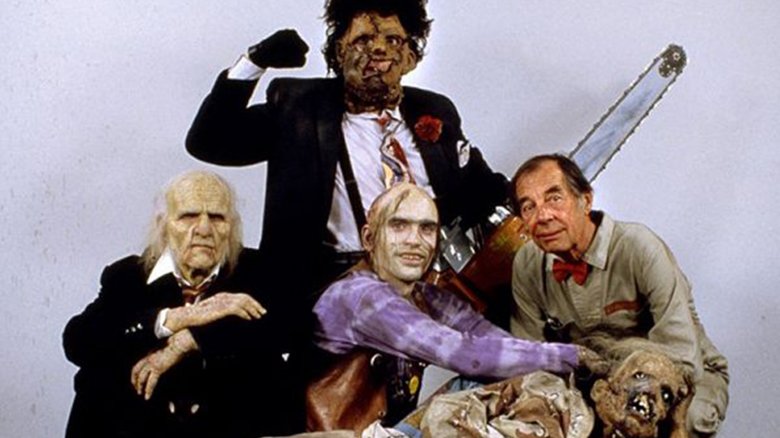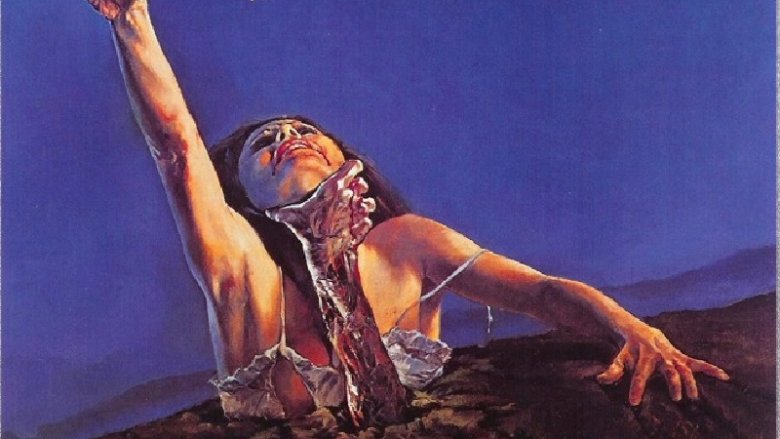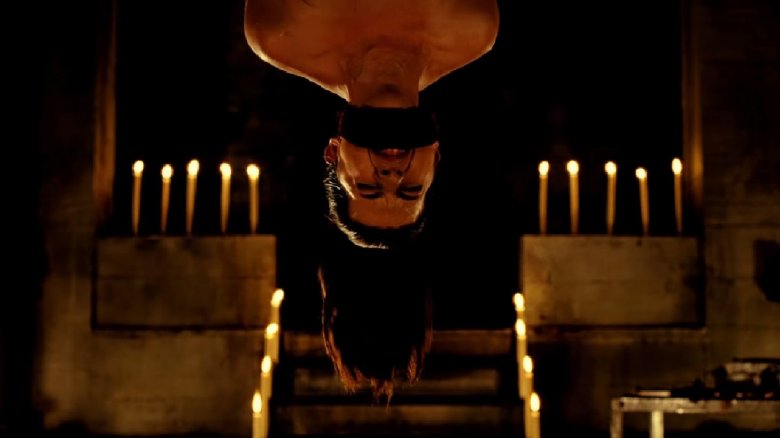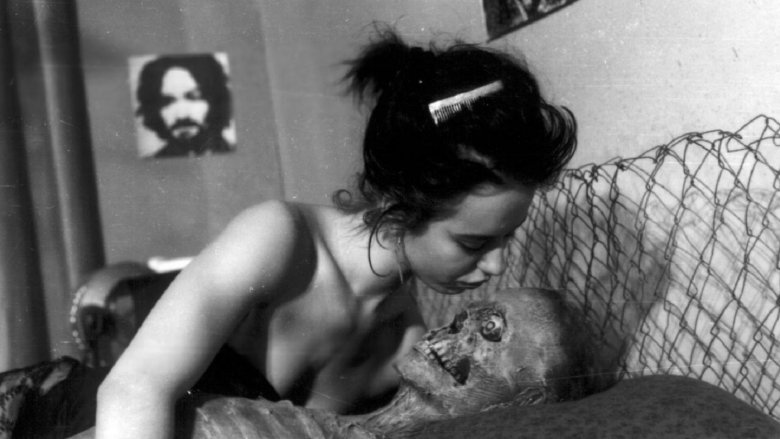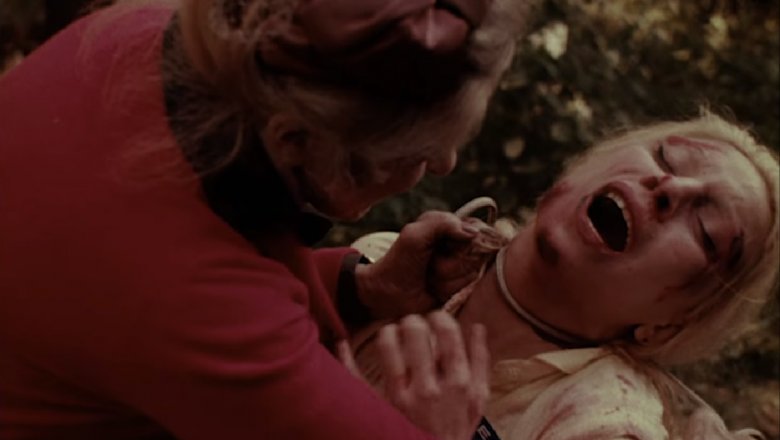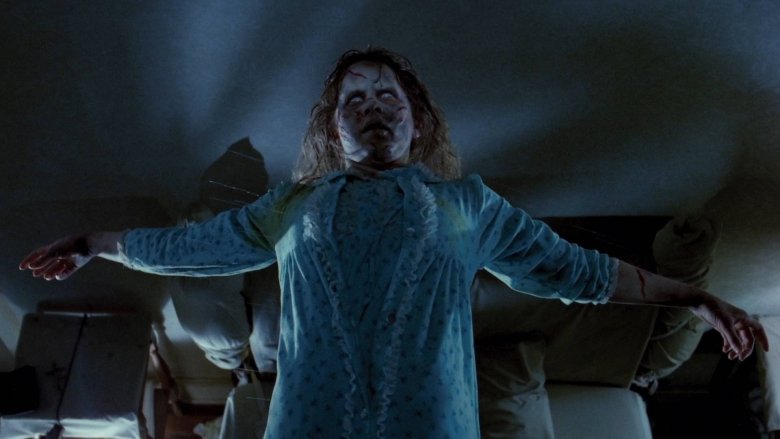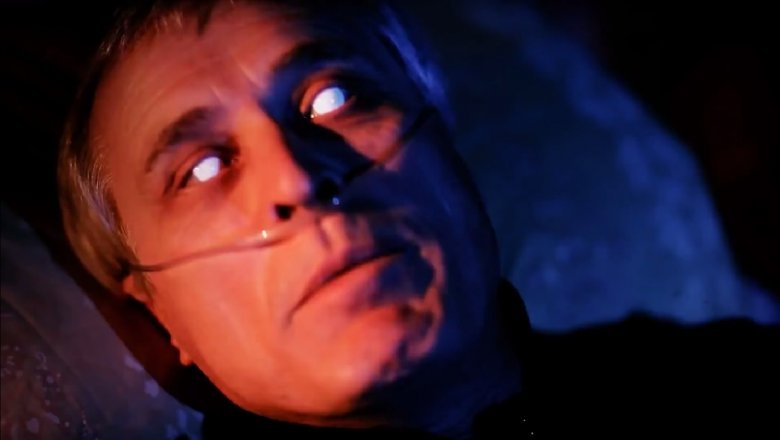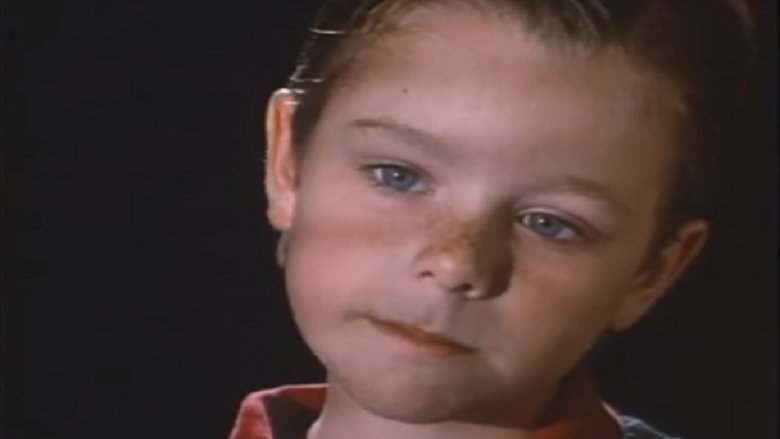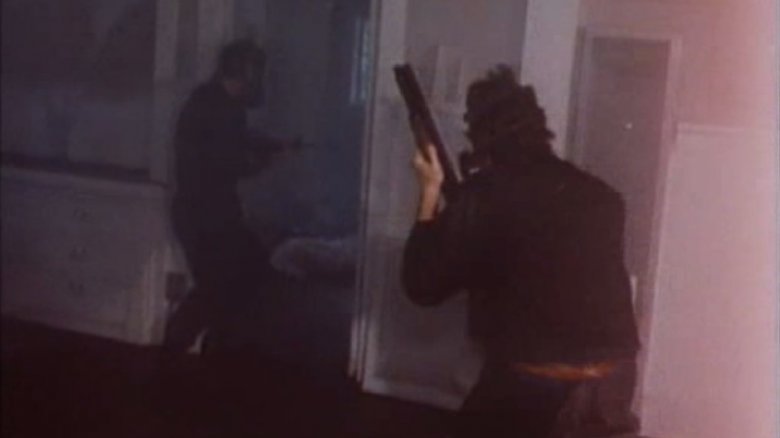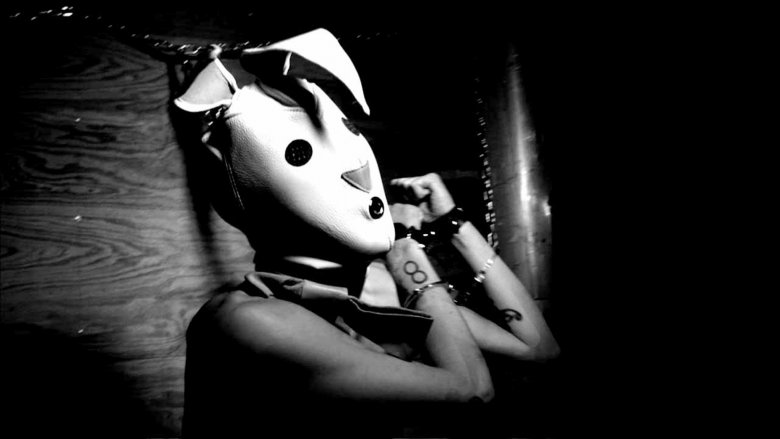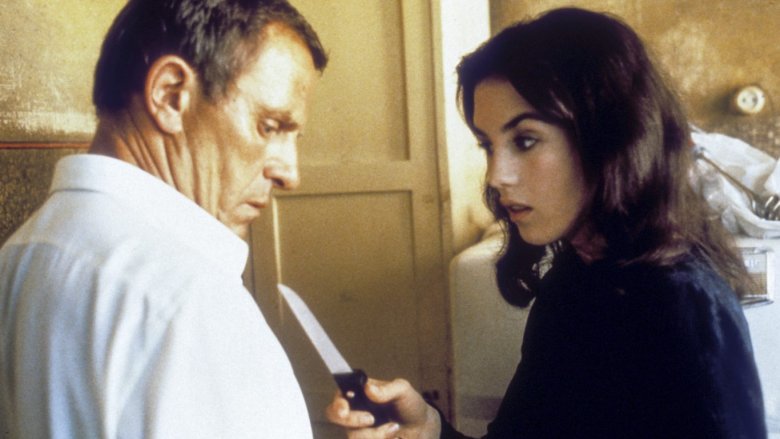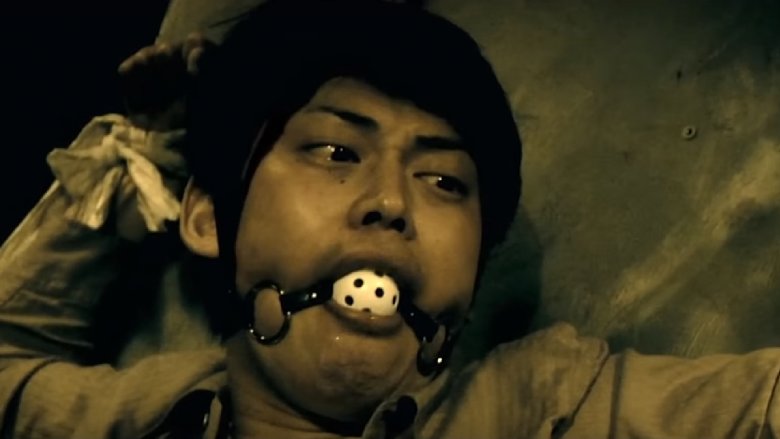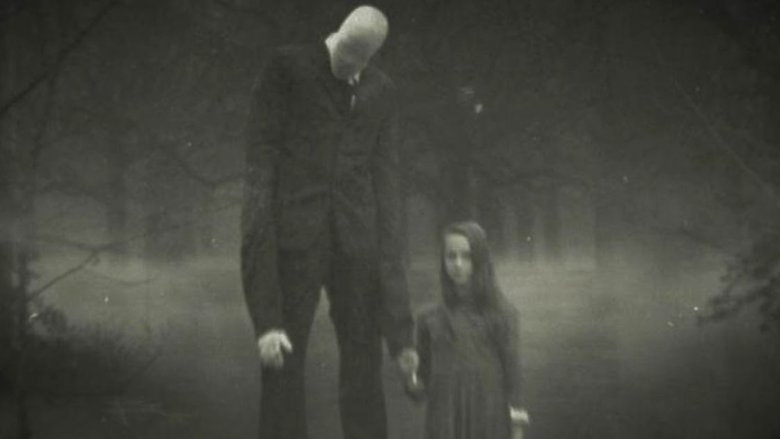Horror Movies Banned For Being Too Disturbing
Freedom of speech is fundamental for art—it's all about pushing boundaries and revealing truths by saying things others haven't. But the line is drawn at speech that causes harm to others, and not everyone agrees where that line is. While the United States is very liberal about the type of expression it allows in its media, other countries have different, sometimes very specific concerns.
There are a number of different ways a film can be banned, from importation restrictions to refused certifications by regulatory boards, all the way up to the rare instances when the screening or possession of a movie becomes a criminal act. Fortunately for viewers, there are so many ways around these roadblocks now that a movie being banned is more of a trivial inconvenience.
Still, efforts to ban movies say a lot about the countries and the movies in question. As long as free expression exists, artists will push the boundaries—and so-called watchdogs will push back. These horror films were all battlegrounds for censorship, deemed too disturbing for viewers...but they managed to find their audiences anyway.
I Spit On Your Grave
A chronicle of a woman's rape and her brutal revenge, I Spit On Your Grave is a violent slice of grimy horror that was met with fierce opposition upon its release in 1978. The critics who disliked it didn't pull their punches; Roger Ebert called the movie "so sick, reprehensible and contemptible" that he could barely believe it existed, condemning it as "a film without a shred of artistic distinction." And it wasn't just critics who rejected the film for its violence—for a surprisingly long period, entire countries wanted nothing to do with it.
Canada initially banned the movie, later allowing individual provinces to decide if it would be allowed within their borders during the 1990s. The U.K. would only allow the movie to be released in censored form, while Norway, Iceland, and West Germany banned it outright on the premise that it supported violence against women.
Weirdly, the movie was only banned in Australia almost 20 years after its initial release—a largely ineffective move, considering how many copies were already in circulation by then. The ban was rescinded in 2004, but not all countries have been so lenient as the years have gone by: in Ireland, the film remains banned to this day.
Cannibal Holocaust
One of the first found-footage horror movies is also among the most notorious: Cannibal Holocaust led to its director being arrested for suspicion of murder.
Uniquely structured, Cannibal Holocaust is presented as a movie-within-a-movie, with the meat of the film being a faux documentary about a missing film crew meant to appear as real as possible. Actual animals were killed onscreen, making the fake deaths of the human characters more believable. To help sell the illusion, the actors' contracts included a provision that they wouldn't appear in other movies, TV shows, or ads for a year's time.
The high degree of verisimilitude came back to haunt director Ruggero Deodato, who was arrested by Italian authorities shortly after Cannibal Holocaust's February 1980 premiere in Milan on charges of obscenity and suspicion of making a snuff film. The fact that the actors seemed to have really disappeared complicated Deodato's defense, which ended up needing to be surprisingly robust. Deodato demonstrated the movie's special effects, showed behind-the-scenes photos, and brought actors from the movie into the public eye to avoid prison.
The real animal killings still led to the film being banned by Italian authorities, a judgment that was echoed by Australia, Norway, Finland, and New Zealand. Australian customs authorities confiscated copies of the film, and other countries, such as the U.K., only allowed the movie to be released in censored form.
The Human Centipede 2 (Full Sequence)
The Human Centipede series is notorious for two things: its foul-smelling concept, and the decreasing level of artistry across its three installments. The first movie is a fairly traditional (if unique-in-concept) horror movie, which was actually fairly tame beyond its gross-for-the-sake-of-gross subject matter. The sequel, however, hit the throttle on its quest to generate revulsion.
The Human Centipede 2 (Full Sequence) is so extreme that the film was initially refused classification in the U.K., with members of the British Board of Film Classification saying "no amount of cuts" would make the movie acceptable enough to be exhibited or sold. In their decision, the board raised the possibility that the film could be in violation of the nation's Obscene Publications Act, a move which invited indignation from the movie's director, Tom Six.
"Apparently I made an horrific horror-film, but shouldn't a good horror film be horrific?" Six asked in a statement released following the decision. "My dear people it is a f***ing MOVIE."
Centipede 2 was eventually approved for release in the U.K. after undergoing two and a half minutes of cuts; Australia, meanwhile, required 30 seconds of edits. The movie is currently banned in New Zealand, but intriguingly, the third movie wasn't banned anywhere at all, suggesting that at a certain point, the very notion of bothering to censor this sort of thing becomes too ridiculous for anyone to care.
Land of the Dead
Banning a movie instantly makes it more notorious—people want what they can't have, after all. And most organizations tend to do it only in extreme circumstances, with movies so violent or sexually explicit that they'd test the mettle of even the most jaded viewer. So it's odd that a relatively tame studio effort like George Romero's Land of the Dead ended up being banned in Ukraine—especially when places like Quebec and the U.K. classified the movie as being suitable for teens.
The context is important to consider, but it raises more questions than it answers. According to a writeup in Variety, the movie was banned for its portrayal of cannibalism—not because its scenes of humans getting devoured were especially gory, but due to concerns that such content would bring up negative memories surrounding the Holodomor, a wave of famine that struck the nation in 1933, killing millions.
To be clear, Land of the Dead was released in 2005, some 72 years after the events of the Ukrainian famine. There's no doubt that the Holodomor was a horrifying time in the nation's history, but is Land of the Dead, a movie that takes place in post-apocalyptic Pennsylvania, really going to open those old wounds?
A Serbian Film
While Ukraine wanted nothing to do with Land of the Dead for its perceived parallels to past pains, A Serbian Film, aka Srpski Film, explicitly uses historical horrors to inform its onscreen carnage. The story of an adult film star who's manipulated into appearing in an increasingly sadistic movie, A Serbian Film has gained a reputation worldwide as one of the most extreme horror movies ever made.
The movie's most horrifying moments are truly transgressive, featuring the rape and murder of a newborn infant, sex with corpses, and a climax which features the protagonist being tricked into sexually assaulting his own child. It's far from surprising that it's been banned in Germany, Norway, Brazil, Australia, New Zealand, Malaysia, Spain, and Singapore, with the countries that eventually allowed the movie's release usually requiring the film to first undergo censorship and cuts.
Following A Serbian Film's ban in Spain, the director of a film festival faced criminal charges (later dropped) for daring to show the movie, with the accusation being that screening the film constituted exhibition of child pornography. The prosecution's case was such an overreach that the film's director, Srdjan Spasojevic, claimed "those prosecutors have no clue what child pornography actually means," adding that the sequences "weren't made to be arousing in any way, but to depict the pure horror and brutality of innocence being ruthlessly defiled."
Saw VI & Saw 3D
The Saw series went on for a good number of years before some countries got around to banning it. It wasn't until the sixth entry that any country made moves to prevent its wide release, when the sequel was temporarily restricted in Spain and slapped with the "Pelicula X" rating usually reserved for pornography.
Whatever made the sixth movie more objectionable than its predecessors remains a mystery; anyone who's seen it will tell you that the best description of Saw VI is "more of the same." Regardless, the film was required to cut its more violent scenes to get a wider release in Spain. In Thailand, the movie was banned outright, with the very vague reasoning that its release posed a threat, somehow, to public safety.
The follow-up picture, alternatively called Saw 3D, Saw VII, or Saw: The Final Chapter, was banned from public exhibition in Germany for its violence. Again, what makes this movie more violent that the installments that preceded it is a mystery—for our money, Saw 3D is more of a hokey roller coaster of a Halloween movie than a living nightmare too horrifying to behold.
Salò, or 120 Days of Sodom
A metaphor for fascism and abuse by the state, Salò is among the most legitimately disturbing, disgusting, and horrifically explicit movies you might ever see—this isn't a situation like with Saw 3D where its banning will leave you scratching your head, wondering what the big deal is.
Set in the Republic of Salò under Benito Mussolini, the movie portrays the imprisonment, rape, murder, and dehumanization of a large group of children by a cabal of depraved elites. Unflinching and unsparing, it's the kind of movie you only want to watch once, if ever. For decades after its release in 1975, it was banned in the United Kingdom and New Zealand, and was mostly banned in Australia until 2010, save for a brief window in which a theatrical release was allowed.
While the movie was never banned in the United States, it was involved in the arrest of the owners of a Cincinnati-based bookstore in 1994 after a police officer bought the movie as part of a questionable sting operation. The case was dismissed before a court could determine if the film violated obscenity laws, and it's doubtful the issue will ever be raised again; today, the movie is available in a high-definition transfer from the Criterion Collection.
Traces of Death
Traces of Death is one of the most soulless "horror" movies ever made, little more than a feature-length clipshow of crime scene and medical photos meant to shock and disturb. It's one of the few movies on this list that might have trouble winning the argument when it comes to questions of its artistic merit, and is certainly not recommended for any viewer. But should it be banned?
Some countries think so. Traces of Death is outlawed in the United Kingdom for having no "journalistic, educational, or other justifying context for the images shown," images described as "shocking and distressing" with a "lack of any justifying context." The British authorities also had trouble with "the flippant and sensationalist nature of the occasional voice over," expressing concerns that the movie's cavalier attitude toward the dead could have a corrupting affect on the youth of the U.K.
The entire series of straight-to-video Traces of Death movies has been subject to confiscation by customs authorities in Australia; according to the country's written regulations, they "offend against the standards of morality, decency and propriety generally accepted by reasonable adults to the extent that they should not be imported." It seems like a bit of an overreaction, even though Traces of Death does show footage and photography of real fatal incidents. Is it worth watching as a movie? No. But is it really worth a blanket ban? Not really.
The Texas Chainsaw Massacre 1 & 2
The Texas Chain Saw Massacre heralded a new era of onscreen violence that audiences have since grown rather accustomed to, but it was a shockingly raw experience at the time.
British censors couldn't make up their minds about whether to allow Tobe Hooper's seminal horror classic into the country, banning the movie after it had already been in theaters for a year and not rescinding the ban until the late '90s. Australia refused to allow it to be shown for years before relenting, and a surprisingly long list of other countries also banned it at some point—Brazil, Chile, Finland, France, Iceland, Ireland, Norway, Singapore, Sweden, Ukraine and West Germany all put forth efforts to keep the low-budget horror picture down.
The 1986 sequel also faced difficulties with censors: it was banned in Australia for 20 years, and when a bootleg release of the movie gained popularity on home video, authorities conducted raids of stores that sold copies. The film was briefly banned in Germany and Singapore, and the U.K. again resisted an uncensored release, asking for 20 to 25 minutes of footage to be excised before the picture would be certified. Producers for the movie didn't cooperate; Texas Chainsaw Massacre 2 was eventually released in the U.K. without cuts in 2001.
The Evil Dead
It's more than a little amusing that a film so campy and over-the-top as The Evil Dead would be a cause of concern for censors. Originally screened for the BBFC in 1982, the movie split the opinions of officials, with the board "divided between those who felt the film was so ridiculously 'over the top' that it could not be taken seriously, and those who found it 'nauseating.'" The board determined that the film would need 49 seconds' worth of cuts before its release.
Shockingly, even in its edited form, The Evil Dead managed to land store owners in legal trouble, with a number of copies seized by authorities and some defendants pleading guilty to charges of supplying an obscene article. The movie wasn't released uncut in the U.K. until 2001, after initial furor—spurred on mostly by religious critics and so-called "pro-family" advocates—died down enough for the BBFC to concede that it wasn't so obscene after all.
Hostel & Hostel: Part 2
Lots of Europeans may have had an issue with the first Hostel for making the continent seem like a depraved tourist death blender, but it was only in Ukraine that the movie pushed enough buttons to get itself banned. Both Hostel and its sequel were outlawed in the country for excessive cruelty, as well as for portraying the neighborhood as a place where tourists are routinely tortured for money. (It's actually a place where governments waste time fretting over the kind of horror movies people watch.) Despite the ban, the movie is still legally available for private viewing—just don't let them catch you screening it in the front yard.
Beyond Ukraine, the uncut version of Hostel: Part II is banned in Germany and New Zealand, and the film was only released in Malaysia and Singapore after undergoing cuts to its more extreme scenes of torture, violence, and death. And though the film isn't banned in the country, as recently as 2007, politicians in the United Kingdom have argued that images from the film could (and perhaps should) be deemed illegal. As a mark of how absurd these censorship crusades often are, one politician who spoke out against the movie conceded in the process that he'd never even seen it.
Nekromantik 1 & 2
There's nothing like the one-two punch of necrophilia and animal cruelty to get the censors on your tail, and Nekromantik provides both in abundance, with aplomb. The story of a couple with wildly flexible morals and a truly out-there sex life, it's seemingly designed to provoke the prudish.
Using scenes of sex with corpses to creatively further a story of elite oppression and class struggle, Nekromantik was banned by Iceland, Norway, Malaysia, Singapore, New Zealand, Finland, Australia, and also some provinces in Canada. Despite defying content standards and being made specifically to protest government censorship, the movie faced no real opposition in its home country of Germany until the release of its sequel four years later, at which point sales of the original movie were temporarily restricted.
If the response from German authorities to the first Nekromantik was relatively muted, the reaction to Nekromantik 2 more than made up for it. Authorities raided theaters that screened the movie, confiscating prints and making possession a punishable act.
Mother's Day (1980)
The 1980 movie Mother's Day is an over-the-top exploitation film focusing on two deranged, isolated, forest-dwelling men who capture, rape and kill victims for the approval of their psychopathic mom. It was banned in the United Kingdom for years for its excessive and gratuitous sexual violence, with the movie only getting a home media release in the U.K. in 2015. Interestingly, another version of the movie was filmed by Saw series director Darren Lynn Bousman in 2010, resulting in a remake that was tame enough to play in British cinemas while the original was still banned.
In Australia, the movie was released uncut on VHS before a later review resulted in the movie being banned, and many copies of the movie remained in circulation until the VHS format was further phased out.
The Exorcist
In another high-profile example of censors changing their mind about a movie years after the fact, The Exorcist saw its availability on home video in the U.K. vanish after the BBFC chose to deny certification for the movie, supposedly for the sake of keeping it away from impressionable children. It would remain unavailable in the country for the next ten years, until a revived theatrical run of the movie in 1998 came around and was successful enough to remind people of how essential the movie was.
By the late 90s, personnel changes on the BBFC had resulted in more relaxed standards regarding censorship, and The Exorcist was again allowed to be released uncut on home video. It played on British television for the first time in 2001, almost 30 years after its original theatrical release.
Father's Day
A Canadian horror-comedy about a man getting revenge on the killer who raped and murdered his father, Father's Day has been described as "pure grindhouse madness," a reputation that was bolstered as it developed a fraught relationship with the government of Australia. Although it was allowed to screen at its theatrical premiere in Sydney in 2012, classification was refused for its home video release, resulting in an effective ban on the movie and future screenings of it at film festivals being canceled.
Following the decision by Australian authorities to ban the movie from being distributed on video, a manager at distributor Monster Pictures named Neil Foley lacerated them for being overly-sensitive and not considering the movie in the right context.
"We think it's an appalling decision," Foley said in response to the ban. "The film is a comedy, it's been taken way out of context. We're not really sure what scenes they have a problem with."
Foley added that the usually censor-happy British authorities had raised no concerns with the movie, and said he found it startling that their counterparts in Australia were reacting differently. "It's been taken in the right context everywhere in the world except Australia," he added.
After much contested back-and-forth, the movie was eventually released in the country in a censored version that toned down the gore in 2013.
Mikey
An example of real-life tragedy affecting the way audiences perceive art, the banning of Mikey had more to do with unfortunate timing than an overabundance of onscreen taboo-breaking and gore. The story of a young adopted boy who turns out to be a sadistic serial killer, Mikey was banned in the United Kingdom following the murder of three-year-old James Bulger by two 10-year-olds in 1993. The real-life crime was so shocking, evidently, that Mikey was deemed guilty by association.
Intriguingly, the ban on Mikey was never rescinded in the decades that followed. While public exhibition of the movie remains prohibited, the BBFC contends that it doesn't mean the movie is necessarily banned for good—it just needs to be submitted again for review. For one reason or another, it never has been, leaving the movie in legal limbo.
Faces of Death
While marketing materials for the cult series of "snuff films" Faces of Death often allude to the original movie being "banned in 46 countries," only a handful actually bothered to put formal restrictions on the movie's release: Australia, Norway, Finland, New Zealand and the United Kingdom all levied bans against Faces of Death for its gore and perceived promotion of violence.
There are many myths and legends around the content of Faces of Death, with many believing that the footage of people dying is real. In fact, the movie is as full of showbiz fakery as any other horror picture—even scenes of animal cruelty were faked for the cameras, unlike Cannibal Holocaust. Despite the fact that the sequences of animal violence were faked, the BBFC still required they be cut from the movie before Faces of Death could see release after decades of being restricted in 2003.
Meanwhile, Australia's ban on most of the entries in the series has persisted. When a release of all four movies in the series was planned in 2008, only the original was given a classification—despite being similar in content, the three sequels remained banned.
The Bunny Game
An independent 76-minute horror feature produced for $13,000 about a female prostitute and hitchhiker who's kidnapped and brutalized by a truck driver, The Bunny Game easily ran afoul of British censors upon its release in 2010. Refusing classification for the movie on the basis of its graphic depictions of sexual abuse, the BBFC called the movie "unacceptable to the public."
"The abuse of the kidnapped woman takes up the greater part of The Bunny Game," the board said in a statement regarding its rationale behind the rejection. "The principal focus of the work is the unremitting sexual and physical abuse of a helpless woman, as well as the sadistic and sexual pleasure the man derive[s] from this." In short, there may be no version of The Bunny Game that British censors would find acceptable.
Possession (1981)
Possession is one of the best and most bonkers horror movies we've ever seen, but that doesn't mean everyone was comfortable with its content upon its release in 1981.
Following a limited theatrical run in the United Kingdom, Possession was labeled as a distasteful "video nasty" and banned over its violent content for a decade. It was ultimately released uncut on home video in the country in 1999.
Weirdly, the movie also had a difficult time getting an uncut release in the United States, although it was never formally banned. The original U.S. release was heavily edited, resulting in a number of different versions being circulated with dramatic variations. One version notoriously cut out an astonishing 40 minutes, rearranging scenes and adding optical effects that turned an already challenging movie into something all-but-impossible to understand.
It wasn't until 2000 that the original version became widely available in the U.S.—all of which is shocking, considering the movie's relative tameness. While its plot may feel like a fever dream, it's no more violent or graphic than other horror movies of the era.
Grotesque (2009)
The dictionary definition of torture porn, Grotesque is a 73-minute Japanese exploitation horror movie that focuses chiefly on the kidnapping and sadistic murder of a young couple by a deranged madman who explicitly torments victims for his own sexual pleasure. As they did with The Bunny Game, the United Kingdom's BBFC refused to offer a classification for the film, writing that the movie was so gleefully violent that it posed a risk to society.
"The chief pleasure on offer in viewing Grotesque appears to be the spectacle of sadism (including sexual sadism) for its own sake," the board said in its statement. Running down the movie's main offenses, the censors cited acts of "amputation, eye gouging, castration and evisceration resulting in a gory and violent death" as being among their biggest concerns.
The lack of a traditional narrative only bolstered the board's decision to reject the movie, with their assessment being that the film could not be cut to satisfy their standards with its very concept being so objectionable. Meanwhile, Grotesque's home country had no such concerns, although the British ban did spark a debate in the country over the merits of the splatter film. The debate brought a wave of new publicity to the movie, suggesting once again that there's nothing so valuable for a movie's long-term reputation as the allure it gains from being banned.
Slender Man (2018)
A number of horror movies have been inspired by actual events, but it's relatively rare for Hollywood to pursue a tragic story that's only recently been in the headlines — and the outrage that greeted 2018's Slender Man serves as a fine example of why.
Inspired by the online horror phenomenon that rose out of so-called "creepypasta" works, the film tells the story of a group of teenage girls intent on debunking the legend of a dark, mysterious creature... only to fall under his sinister spell. It's a tale that's all too familiar to a group of Wisconsin parents whose daughters were all affected by the Slender Man meme: in 2014, 12-year-olds Morgan Geyser and Anissa Weier made headlines for repeatedly stabbing a friend, Payton Leutne, in a ritual designed to appease the fictional creature.
Long before the resulting court case was anywhere near its conclusion, Sony backed a Slender Man movie — and its road to theaters was predictably rocky, with studio drama, release delays, and copyright battles threatening to derail the project even as parents of the girls involved in the (thankfully non-fatal) incident tried to shame the movie out of theaters. "In my opinion it's extremely distasteful," Weier's father told the New York Post. "All we're doing is extending the pain all three of these families have gone through."
None of it was enough to stop Slender Man's inexorable march to cineplexes, but multiple theaters in the area where the attack took place took the extraordinary yet understandable step of banning the picture prior to its premiere. In January 2018, the Avalon Theater and Fox Bay Cinema Grill — both roughly 20 miles from the scene of the crime in Waukesha — announced they wouldn't be screening Slender Man, with Fox Bay owner Roman Kelly telling reporters that it would be "hitting a little too close to home."
They were joined in early August — just prior to Slender Man's theatrical debut on the 10th — by the Marcus Theatres chain, which decided to ban the movie from locations in Milwaukee and Waukesha counties "out of respect for those who were impacted." For those outside the county line (or willing to do a little extra driving), however, screenings still proceeded as planned. Turns out you really can't stop the Slender Man.
